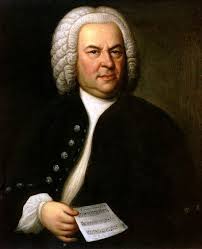Johann Sebastian Bach (1685-1750) stands as one of the most celebrated composers in the Western classical tradition. His work, characterized by intricate counterpoint and profound emotional depth, has influenced countless musicians and composers. Here, we explore ten of Bach’s most significant and enduring compositions, each showcasing his genius and versatility.
1. Brandenburg Concertos (BWV 1046–1051)
The six Brandenburg Concertos, composed around 1721, are among Bach’s most popular orchestral works. They are remarkable for their variety, each concerto featuring a different combination of instruments and embodying the principles of the concerto grosso. The Brandenburg Concerto No. 3 in G major (BWV 1048) and the Brandenburg Concerto No. 5 in D major (BWV 1050) are particularly noted for their brilliance and innovation.
Highlights:
- Concerto No. 2 in F major (BWV 1047): Features a dazzling trumpet part.
- Concerto No. 5 in D major (BWV 1050): Known for its virtuosic harpsichord cadenza.
2. The Well-Tempered Clavier (BWV 846–893)
This monumental work, composed in two books (1722 and 1742), consists of 48 preludes and fugues, one pair for each major and minor key. It explores the full range of keyboard possibilities and was designed to demonstrate the advantages of equal temperament tuning. These pieces are both didactic and artistic, offering insight into Bach’s compositional techniques.
Highlights:
- Prelude and Fugue in C major (BWV 846): Opens the collection with a serene prelude followed by a structured fugue.
- Prelude and Fugue in B-flat minor (BWV 867): Known for its emotional depth and complexity.
3. Mass in B Minor (BWV 232)
The Mass in B Minor, completed in 1749, is a monumental setting of the Latin Mass and one of Bach’s final compositions. It is widely regarded as one of the greatest choral works in the Western tradition, combining elements of both sacred and secular music. The Mass is celebrated for its grandeur, technical mastery, and emotional impact.
Highlights:
- Kyrie: A majestic opening movement with intricate counterpoint.
- Sanctus: A joyful and expansive section celebrating the divine.
4. St. Matthew Passion (BWV 244)
The St. Matthew Passion, composed in 1727, is an oratorio setting of the Passion narrative from the Gospel of Matthew. It is one of Bach’s most profound religious works, characterized by its dramatic intensity and rich emotional content. The double choir and orchestra create a powerful and immersive experience.
Highlights:
- “Erbarme dich, mein Gott”: A deeply moving alto aria.
- “Kommt, ihr Töchter, helft mir klagen”: The opening chorus, which sets a somber and reflective tone.
5. Goldberg Variations (BWV 988)
Written in 1741, the Goldberg Variations are a set of 30 variations for harpsichord on an original aria. They represent the pinnacle of Bach’s art of variation and are known for their technical brilliance and expressive range. Each variation showcases a different aspect of keyboard technique and musical style.
Highlights:
- Aria: The elegant and serene theme that opens and closes the set.
- Variation 25: A hauntingly beautiful and chromatic slow movement.
6. Cello Suites (BWV 1007–1012)
Bach’s six Cello Suites, composed around 1720, are cornerstones of the solo cello repertoire. Each suite consists of a prelude followed by a series of dance movements. They are celebrated for their technical demands and expressive depth, demonstrating Bach’s ability to write compelling solo music.
Highlights:
- Suite No. 1 in G major (BWV 1007): Particularly famous for its lively and accessible Prelude.
- Suite No. 5 in C minor (BWV 1011): Known for its profound emotional content.
7. Toccata and Fugue in D Minor (BWV 565)
This work, though often attributed to Bach with some controversy about its authorship, remains one of the most iconic pieces of organ music. Its dramatic opening toccata and the intricate fugue that follows have made it a favorite in the organ repertoire and popular culture.
Highlights:
- Toccata: Begins with a powerful and dramatic flourish.
- Fugue: Develops a single theme into a complex and intricate tapestry of sound.
8. Art of Fugue (BWV 1080)
The Art of Fugue, composed in the final years of Bach’s life and left incomplete, is a systematic exploration of fugal writing. It consists of 14 fugues and four canons, all based on a single musical theme. The work is a profound study in counterpoint and demonstrates Bach’s compositional prowess.
Highlights:
- Contrapunctus I: The opening fugue, simple and clear in its exposition.
- Contrapunctus XIV: An unfinished quadruple fugue that leaves a sense of mystery.
9. Christmas Oratorio (BWV 248)
The Christmas Oratorio, composed in 1734, is a six-part oratorio that narrates the story of Christmas. Each part was originally intended to be performed on different feast days during the Christmas season. The work combines festive choruses, poignant arias, and intricate instrumental writing.
Highlights:
- “Jauchzet, frohlocket”: The jubilant opening chorus.
- “Schlafe, mein Liebster”: A tender and lyrical alto aria.
10. Violin Concertos (BWV 1041–1043)
Bach’s Violin Concertos, composed in the early 1720s, are exemplary works of the Baroque concerto genre. They showcase the violin’s expressive capabilities and Bach’s skill in combining solo and orchestral textures. The Violin Concerto in E major (BWV 1042) and the Violin Concerto in A minor (BWV 1041) are particularly well-known.
Highlights:
- Concerto in E major (BWV 1042): Known for its lively and joyful first movement.
- Concerto in A minor (BWV 1041): Features a deeply expressive Andante second movement.
These ten compositions exemplify Bach’s extraordinary versatility, his profound grasp of musical forms, and his ability to convey deep emotion through complex structures. Whether through the intricate counterpoint of his fugues, the expressive depth of his religious works, or the technical brilliance of his instrumental music, Bach’s compositions continue to inspire and captivate audiences around the world.


Comments are closed